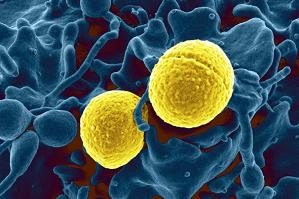This Week in PLOS NTDs and PLOS Pathogens: NTDs and the End fo the UN MDG, Understanding Defense Mechanisms at the Maternal-fetal Interface, Low-cost Field Microscopy, and More
The following new articles are publishing this week in PLOS NTDs:

The United Nations Millennium Development Goals (MDGs) expire in 2015, and there is currently much debate, discussion and jostling for position regarding what should replace them. The results of which is likely to prove extremely important for determining the global health budget over the coming decades. Here James Smith and Michelle Taylor discuss the history of NTDs in the context of the sixth MDG goal (to combat HIV/AIDS, malaria and other diseases), as well as the case for including them in the post-2015 agenda.
Resource constraints prevent adequate surveillance of neglected diseases such as rabies in developing countries, leading to a poor understanding of the disease burden and limited evidence with which to design effective control measures. Using a low cost mobile phone-based system, Syed Mohammad Asad Zaidi and colleagues carried out a prospective surveillance of dog bites and rabies in Pakistan by screening all patients presenting to nine emergency rooms in eight cities over a two-year period.
A host pro-inflammatory immune response is widely believed to contribute to the clinical complications that occur in some patients with dengue. Synthetic glucocorticoids, immunomodulatory agents commonly used in medicine, have been suggested as a therapy for dengue. Here Nguyen Thi Hanh Tien and colleagues report on immunological changes occurring during prednisolone therapy with a view to understanding the lack of clinical benefit by glucocorticoid therapy and to guide future intervention strategies for dengue.
The following new articles are publishing this week in PLOS Pathogens:
To coordinate the expression of genes involved in its growth and survival, S. aureus uses, among other factors, around 250 regulatory RNAs. In their review, Brice Felden and colleagues provide an inventory of those RNAS and discuss what is known about their functions in stress response, metabolism, and virulence.
Isabel Gordo and colleagues have devised an experimental system to observe and study the evolution of bacteria in response to encounters with cells of the mammalian immune system. They found that in less than 500 generations, originally commensal E. coli became more resistant to being killed by macrophages and acquired the ability to cause disease in mice.
Interested in the innate defense mechanisms at the maternal-fetal interface, Anna Bakardjiev and colleagues adopted a system of differentiated murine trophoblast stem cells to be able to study placental defenses. They report on some unique properties of the syncytium that forms the placental barrier, and on how those affect susceptibility to bacterial infection.
